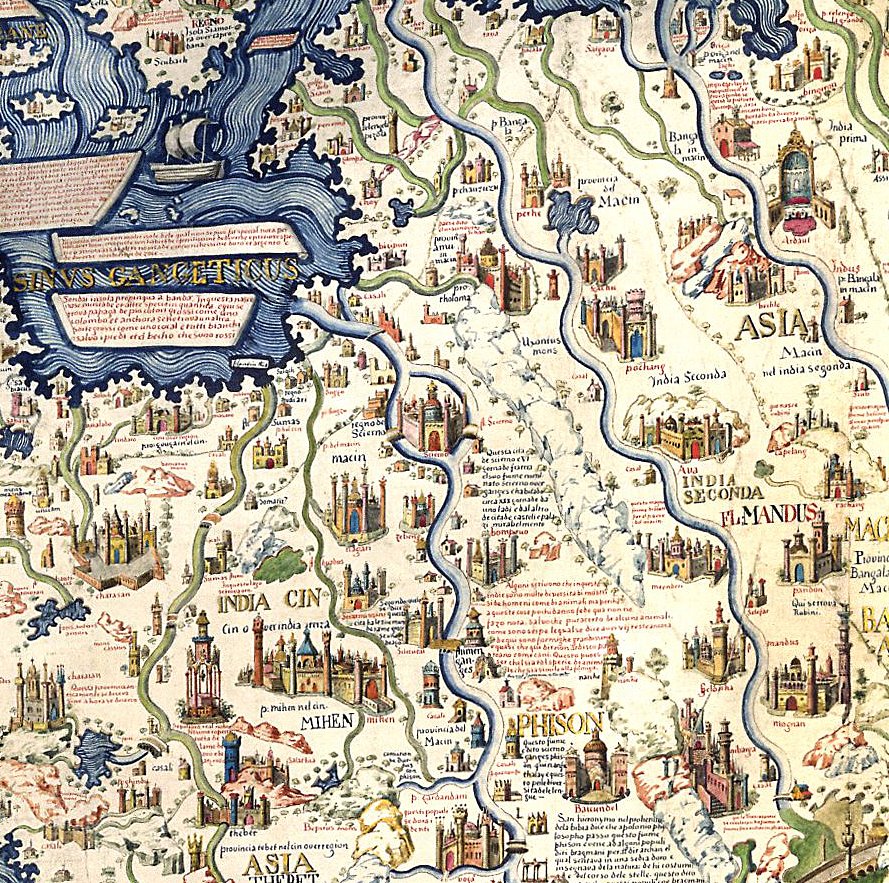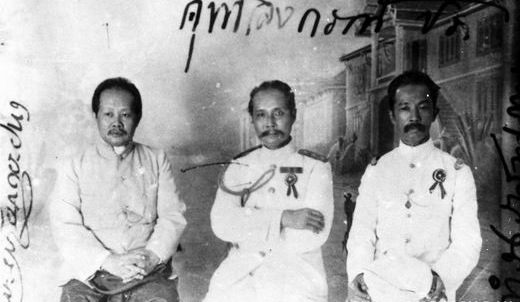|
Maha Nawrahta
Gen. Maha Nawrahta ( my, မဟာနော်ရထာ, , called Mang Maha Noratha by Damrong Rajanubhab; d. March 1767) was joint commander-in-chief of the Royal Burmese Army from 1765 to 1767. The general is best known for commanding the southern invasion force in the Burmese invasion of Siam (1765–1767). He and Ne Myo Thihapate jointly commanded the 14-month-long siege of Ayutthaya, the capital of Siam Thailand ( ), historically known as Siam () and officially the Kingdom of Thailand, is a country in Southeast Asia, located at the centre of the Indochinese Peninsula, spanning , with a population of almost 70 million. The country is bo .... He died just a few weeks before the Burmese armies succeeded.Rajanubhab, D., 2001, Our Wars With the Burmese, Bangkok: White Lotus Co. Ltd., He was buried with extraordinary honors by royal decree. References Burmese generals 1767 deaths Year of birth unknown {{Myanmar-stub ... [...More Info...] [...Related Items...] OR: [Wikipedia] [Google] [Baidu] |
Toungoo Dynasty
, conventional_long_name = Toungoo dynasty , common_name = Taungoo dynasty , era = , status = Empire , event_start = Independence from Ava , year_start = 1510 , date_start = 16 October , event_end = End of dynasty , year_end = 1752 , date_end = 23 March , event_pre = , date_pre = 1485 , event1 = , date_event1 = 1510–99 , event2 = , date_event2 = 1599–1752 , event3 = , date_event3 = , event4 = , date_event4 = , p1 = Ava Kingdom , p2 = Hanthawaddy Kingdom , p3 = Shan states , p4 = Lan Na Kingdom , p5 = Ayutthaya Kingdom , p6 = Lan Xang Kingdom , p7 ... [...More Info...] [...Related Items...] OR: [Wikipedia] [Google] [Baidu] |
Ayutthaya (city)
Phra Nakhon Si Ayutthaya ( th, พระนครศรีอยุธยา, ; also spelled "Ayudhya"), or locally and simply Ayutthaya, is the former capital of Phra Nakhon Si Ayutthaya province in Thailand. Located on an island at the confluence of the Chao Phraya and Pa Sak rivers, Ayutthaya is the birthplace of the founder of Bangkok, King Rama I. Etymology Ayutthaya is named after the city of Ayodhya in India, the birthplace of Rama in the ''Ramayana'' (Thai, ''Ramakien''); (from Khmer: ''preah'' ព្រះ ) is a prefix for a noun concerning a royal person; designates an important or capital city (from Sanskrit: ''nagara''); the Thai honorific ''sri'' or ''si'' is from the Indian term of veneration Shri. History Prior to Ayutthaya's traditional founding date, archaeological and written evidence has revealed that Ayutthaya may have existed as early as the late 13th century as a water-borne port town. Further evidence of this can be seen with Wat Phanan Choeng, w ... [...More Info...] [...Related Items...] OR: [Wikipedia] [Google] [Baidu] |
Ayutthaya Kingdom
The Ayutthaya Kingdom (; th, อยุธยา, , IAST: or , ) was a Siamese kingdom that existed in Southeast Asia from 1351 to 1767, centered around the city of Ayutthaya, in Siam, or present-day Thailand. The Ayutthaya Kingdom is considered to be the precursor of modern Thailand and its developments are an important part of the History of Thailand. The Ayutthaya Kingdom emerged from the mandala of city-states on the Lower Chao Phraya Valley in the late fourteenth century during the decline of the Khmer Empire. After a century of territorial expansions, Ayutthaya became centralized and rose as a major power in Southeast Asia. Ayutthaya faced invasions from the Toungoo dynasty of Burma, starting a centuries' old rivalry between the two regional powers, resulting in the First Fall of Ayutthaya in 1569. However, Naresuan ( 1590–1605) freed Ayutthaya from brief Burmese rule and expanded Ayutthaya militarily. By 1600, the kingdom's vassals included some city-states in the M ... [...More Info...] [...Related Items...] OR: [Wikipedia] [Google] [Baidu] |
Konbaung Dynasty
The Konbaung dynasty ( my, ကုန်းဘောင်ခေတ်, ), also known as Third Burmese Empire (တတိယမြန်မာနိုင်ငံတော်) and formerly known as the Alompra dynasty (အလောင်းဘုရားမင်းဆက်, Alaungphra dynasty) and the Hunter dynasty (မုဆိုးမင်းဆက် Mokso dynasty / မုဆိုးဘိုမင်းဆက် Moksobo dynasty), was the last dynasty that ruled Myanmar, Burma/Myanmar from 1752 to 1885. It created the second-largest empire in history of Myanmar, Burmese history and continued the administrative reforms begun by the Toungoo dynasty, laying the foundations of the modern state of Burma. The reforms, however, proved insufficient to stem the advance of the British Empire, British, who defeated the Burmese in all three Anglo-Burmese Wars over a six-decade span (1824–1885) and ended the millennium-old Burmese monarchy in 1885. An expansionist dynasty, the K ... [...More Info...] [...Related Items...] OR: [Wikipedia] [Google] [Baidu] |
Royal Burmese Army
The Royal Armed Forces ( my, တပ်မတော်,See (Maha Yazawin 2006: 26), (Yazawin Thit Vol. 1 2012: 236), (Hmannan Vol. 2 2012: 2) for example. ) were the armed forces of the Burmese monarchy from the 9th to 19th centuries. It refers to the military forces of the Pagan Kingdom, the Kingdom of Ava, the Hanthawaddy Kingdom, the Toungoo dynasty and the Konbaung dynasty in chronological order. The army was one of the major armed forces of Southeast Asia until it was defeated by the British over a six-decade span in the 19th century. The army was organised into a small standing army of a few thousand, which defended the capital and the palace, and a much larger conscript-based wartime army. Conscription was based on the ''ahmudan'' system, which required local chiefs to supply their predetermined quota of men from their jurisdiction on the basis of population in times of war. The wartime army also consisted of elephantry, cavalry, artillery and naval units. Firearms, ... [...More Info...] [...Related Items...] OR: [Wikipedia] [Google] [Baidu] |
Burmese–Siamese War (1759–1760)
The Burmese–Siamese War (1759–1760) ( my, ယိုးဒယား-မြန်မာစစ် (၁၇၅၉–၁၇၆၀); th, สงครามพม่า-สยาม (พ.ศ. 2302–2303)) was the first military conflict between the Konbaung dynasty of Burma (Myanmar) and the Ban Phlu Luang Dynasty of the Ayutthaya Kingdom of Siam. It reignited the centuries-long conflict between the two Southeast Asian states that would last for another century. The Burmese were "on the brink of victory" when they suddenly withdrew from their siege of Ayutthaya because their king Alaungpaya had fallen ill. He died three weeks later, ending the war. The casus belli were over the control of the Tenasserim coast and its trade,Baker, et al, p. 21James, Fall of Ayutthaya: Reassessment, p. 75 and the Siamese support for ethnic Mon rebels of the fallen Restored Hanthawaddy Kingdom. The newly founded Konbaung Dynasty had wanted to reestablish Burmese authority in the upper Tenasserim co ... [...More Info...] [...Related Items...] OR: [Wikipedia] [Google] [Baidu] |
Burmese–Siamese War (1765–1767)
The Burmese–Siamese War (1765–1767) ( my, ယိုးဒယား-မြန်မာစစ် (၁၇၆၅–၁၇၆၇); th, สงครามคราวเสียกรุงศรีอยุธยาครั้งที่สอง, lit. "war of the second fall of Ayutthaya"), also known as the fall of Ayoudhia (အယုဒ္ဓယပျက်ခန်း) was the second military conflict between the Konbaung dynasty of Burma (Myanmar) and the Ban Phlu Luang Dynasty of the Ayutthaya Kingdom of Siam, and the war that ended the 417-year-old Ayutthaya Kingdom.Harvey, pp. 250–253 Nonetheless, the Burmese were soon forced to give up their hard-won gains when the Chinese invasions of their homeland forced a complete withdrawal by the end of 1767. A new Siamese dynasty, to which the current Thai monarchy traces its origins, emerged to reunify Siam by 1771. This war was the continuation of the 1759–60 war. The casus belli of this war was also the control of t ... [...More Info...] [...Related Items...] OR: [Wikipedia] [Google] [Baidu] |
Damrong Rajanubhab
Prince Tisavarakumarn, the Prince Damrong Rajanubhab (Thai: ; Full transcription is "Somdet Phrachao Borommawongthoe Phra-ongchao Ditsawarakuman Kromphraya Damrongrachanuphap" (สมเด็จพระเจ้าบรมวงศ์เธอ พระองค์เจ้าดิศวรกุมาร กรมพระยาดำรงราชานุภาพ)) (21 June 1862 – 1 December 1943) was the founder of the modern Thai educational system as well as the modern provincial administration. He was an autodidact, a (self-taught) historian, and one of the most influential Thai intellectuals of his time. Born as ''Phra Ong Chao Tisavarakumarn'' (พระองค์เจ้าดิศวรกุมาร; "Prince Tisavarakumarn"), a son of King Mongkut with Consort Chum (เจ้าจอมมารดาชุ่ม; Chao Chom Manda Chum), a lesser royal wife; he initially learned Thai and Pali from private tutors, and English at the Royal School with Mr. F ... [...More Info...] [...Related Items...] OR: [Wikipedia] [Google] [Baidu] |
Ne Myo Thihapate
Ne Myo Thihapate ( my, နေမျိုး သီဟပတေ့; ), also spelled Nemyo Thihapte and Nemiao Sihabodi ( th, เนเมียวสีหบดี),Rajanubhab, D., 2001, Our Wars With the Burmese, Bangkok: White Lotus Co. Ltd., was a general in the Royal Burmese Army of Konbaung Dynasty of Burma (Myanmar). The general is best known for conquering the Ayutthaya Kingdom, along with Gen. Maha Nawrahta, in April 1767. Career The general began his military career as one of the sixty eight elite commanders, chosen by King Alaungpaya in 1752. He became one of the "most distinguished soldiers" during Alaungpaya's reunification campaigns (1752–1757). Laos and Siam (1765–1767) In 1764, King Hsinbyushin decided to renew the war against Siam. The king selected Thihapate and Maha Nawrahta as joint commanders to lead another invasion. Thihapate was to lead the northern invasion route from Chiang Mai while Maha Nawrahta was to lead the southern route from Martaban (Motta ... [...More Info...] [...Related Items...] OR: [Wikipedia] [Google] [Baidu] |
Burmese Generals
Burmese may refer to: * Something of, from, or related to Myanmar, a country in Southeast Asia * Burmese people * Burmese language * Burmese alphabet * Burmese cuisine * Burmese culture Animals * Burmese cat * Burmese chicken * Burmese (horse), a horse given to Queen Elizabeth II * Burmese pony, a breed of horse * Burmese python See also * * :Burmese people * Bamar people The Bamar (, ; also known as the Burmans) are a Sino-Tibetan ethnic group native to Myanmar (formerly Burma) in Southeast Asia. With approximately 35 million people, the Bamar make up the largest ethnic group in Myanmar, constituting 68% of ..., the majority ethnic group in Myanmar * Burmese English, the dialect of English spoken in Myanmar/Burma * Bernese (other) {{disambig Language and nationality disambiguation pages ... [...More Info...] [...Related Items...] OR: [Wikipedia] [Google] [Baidu] |

_of_Wat_Phra_Si_Sanphet.jpg)


